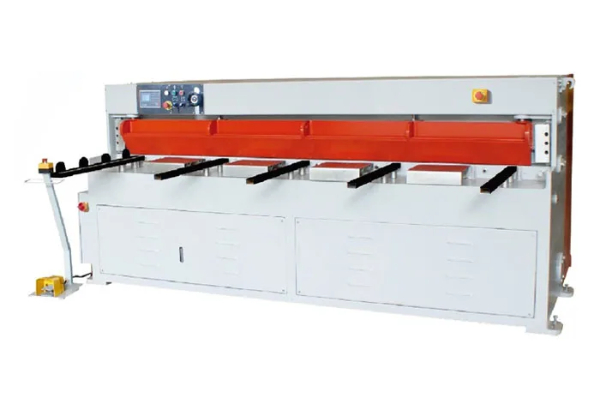
Tips for Operating a Metal Plate Rolling Machine Safely
- By:Metmac
- 2024-08-07
- 161
Metal plate rolling machines are valuable assets in many manufacturing and construction industries. These machines can quickly and accurately bend metal sheets into various shapes, making them essential for a wide range of applications. However, operating a metal plate rolling machine safely is crucial to prevent accidents and injuries. This article provides indispensable tips for ensuring the safe operation of these machines.
Preparation
Inspect the Machine: Before operating the machine, conduct a thorough inspection to ensure it is in proper working order. Check for any loose or damaged parts, hydraulic leaks, and electrical hazards.
Lubricate the Machine: Use appropriate lubricants to ensure the moving parts of the machine are functioning smoothly. Refer to the manufacturer’s recommendations for the type and frequency of lubrication.
Secure the Work Area: Clear the area around the machine of any obstacles or tripping hazards. Ensure the floor surface is level and clean to prevent slipping.
Operation
Wear Appropriate Safety Gear: Wear safety glasses, gloves, and protective clothing to safeguard against flying metal debris and other hazards.
Properly Position the Metal Sheet: Align the metal sheet on the feed rollers according to the required bend. Adjust the pinch rolls accordingly to provide sufficient support and prevent the sheet from buckling.
Engage the Machine: Slowly engage the rollers and gradually increase the bending speed. Monitor the process closely to ensure the sheet is bending evenly and without kinks or wrinkles.
Control the Bending Pressure: Apply the appropriate bending pressure for the thickness and material of the metal sheet. Excessive pressure can damage the machine or the sheet.
Safety Measures
Never Reach into the Rollers: Keep your hands and fingers clear of the pinch point between the rollers at all times.
Use a Backstop: Use a backstop or support bar behind the bending point to prevent the sheet from springing back during the rolling process.
Take Breaks: Regularly take breaks to prevent fatigue and minimize the risk of accidents.
Report Any Problems: Immediately report any unusual noises, vibrations, or other problems with the machine to the supervisor or maintenance personnel.
Maintenance
Regular Cleaning: Keep the machine clean and free of metal chips, dirt, and other debris that can interfere with its operation.
Hydraulic Leak Inspection: Regularly check the hydraulic system for leaks that could cause pressure loss or system failure.
Electrical Maintenance: Ensure the electrical connections are tight and secure to prevent electrical shocks or fires.
Emergency Procedures
Power Cut-Off: Be familiar with the location of the power cut-off switch and know how to use it in an emergency.
Mechanical Lockout: Use mechanical lockout devices to prevent the machine from operating unexpectedly during maintenance or repair.
Injury Response: In case of an accident, immediately stop the machine and seek medical attention.
By following these safety tips, operators can ensure the safe and efficient use of metal plate rolling machines. Remember, prioritizing safety is paramount in operating any heavy machinery to prevent accidents and safeguard the well-being of both the operator and the surrounding environment.
-
Advanced Sheet Metal Rolling, Cutting, and Folding Machines for Efficient Fabrication
2025/10/22 -
High-Precision Sheet Metal Bending and Cutting Solutions for Modern Manufacturing
2025/10/22 -
High-Precision Solutions from Leading Sheet Metal Cutting Machine Manufacturers
2025/09/11 -
Reliable Sheet Metal Equipment for Sale to Support Precision Fabrication
2025/07/17
-
Advanced Sheet Metal Rolling, Laser Cutting, and Folding Machines for Precision Fabrication
2025/10/31 -
High-Performance Sheet Metal Bending and Cutting Machines for Modern Fabrication
2025/10/31 -
High-Quality Sheet Metal Equipment for Sale: Efficient Solutions for Modern Manufacturing
2025/10/31 -
High-Performance Sheet Metal Equipment for Sale: Forming and Shearing Solutions for Modern Fabrication
2025/10/22
-
A Guide to the Latest Innovations in Sheet Metal Folding Machines
2024/11/29 -
Key Features to Consider When Investing in a Sheet Metal Folding Machine
2024/11/28 -
Enhancing Precision with Advanced Sheet Metal Folding Machines
2024/11/27 -
How to Choose the Right Sheet Metal Folding Machine for Your Workshop
2024/11/26






